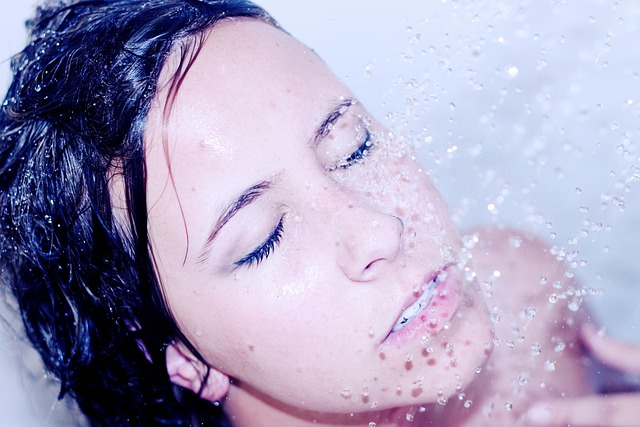Wart removal requires a tailored approach based on severity, skin type, size, and location. Over-the-counter options like salicylic acid or cryotherapy are suitable for mild cases, while more persistent warts may necessitate professional treatments such as laser therapy or surgical excision by dermatologists, offering the best wart removal treatment for stubborn or impactful cases.
Warts can be unsightly and uncomfortable, but finding the best wart removal treatment for your skin type is essential. This comprehensive guide explores various wart removal methods tailored to different skin types, from common home remedies to professional procedures. We delve into the science behind warts, understanding their types and causes, and present effective, safe topical treatments. Learn when it’s time to seek expert help for persistent or unsightly warts. Discover the best approach to clear up these skin anomalies once and for all.
- Understanding Warts: Types and Causes
- Common Wart Removal Methods for Different Skin Types
- Topical Treatments: Effective and Safe Options
- Professional Wart Removal: When to Seek Expert Help
Understanding Warts: Types and Causes
Warts are small, rough growths that can appear anywhere on the skin, causing discomfort and aesthetic concerns for many individuals. They are caused by the human papillomavirus (HPV), which infects the top layer of the skin. Understanding the different types of warts is essential when seeking the best wart removal treatment. Common warts, for instance, typically appear on the hands and feet, while genital warts are associated with sexual transmission. Flat warts, as the name suggests, are smaller and flatter, often found on the face or neck.
The type of wart determines the most suitable removal method. Over-the-counter treatments are available for common warts, including topical creams and freezing solutions (cryotherapy). More persistent or widespread warts may require professional medical attention. Laser treatments and surgical excision are effective for more advanced cases, offering long-term relief from warts. The best wart removal treatment varies based on skin type, wart size, location, and individual tolerance to different methods.
Common Wart Removal Methods for Different Skin Types
Warts can be a persistent and unsightly issue for many, but various removal methods cater to different skin types. For those with sensitive skin, over-the-counter treatments offer a gentle approach using ingredients like salicylic acid or cryotherapy. These at-home solutions are effective and relatively painless, making them ideal for mild cases. However, more severe or persistent warts may require professional intervention.
In-office procedures like laser therapy or surgical excision are suitable for thicker, more resistant warts found on rougher skin types. Laser treatments target the wart’s blood supply, ensuring a precise and efficient removal. Surgical excision, while slightly more invasive, provides immediate results by cutting out the wart. These methods are best left to dermatologists who can tailor these powerful tools to suit individual needs, offering the best wart removal treatment for all skin types.
Topical Treatments: Effective and Safe Options
Warts can be a nuisance, but lucky for all skin types, there are several effective and safe topical treatments available today. Topical options offer a non-invasive approach to wart removal, often with minimal side effects. One of the most popular choices is salicylic acid, which softens the keratin in warts, allowing for easy removal. This gentle yet powerful ingredient is suitable for all skin types and can be found in over-the-counter creams and liquid solutions.
Another safe and effective option is immunotherapy cream, which stimulates your body’s natural immune response to fight off the wart. This method is particularly beneficial for those with more persistent or resistant warts. Moreover, certain essential oils like tea tree oil have shown promise in clinical studies due to their antiviral properties, making them a natural choice for some. When using topical treatments, it’s crucial to follow instructions carefully and be patient, as results may take several weeks to become apparent.
Professional Wart Removal: When to Seek Expert Help
For stubborn or persistent warts, professional removal might be the best wart removal treatment option. While many over-the-counter options are available, certain skin types and wart locations may require specialized care. A dermatologist can offer various treatments tailored to your specific needs, ensuring optimal results with minimal discomfort.
If home remedies have not worked or your warts are causing discomfort, bleeding, or affecting your self-confidence, it’s time to seek expert help. Professional wart removal can include procedures like cryotherapy (freezing), salicylic acid applications, or surgical excision, all of which are performed in a sterile environment. This is particularly important for sensitive skin or warts located on visible areas, ensuring effective treatment without further complications or scarring.
When it comes to finding the best wart removal treatment, understanding your skin type is key. This article has guided you through various methods, from topical treatments suitable for all skin types to professional interventions for persistent cases. By knowing the causes and types of warts, you can make an informed decision. Remember, while some treatments may offer quick fixes, safety and effectiveness should always be a priority. With the right approach, you can bid farewell to those unsightly warts for good.
